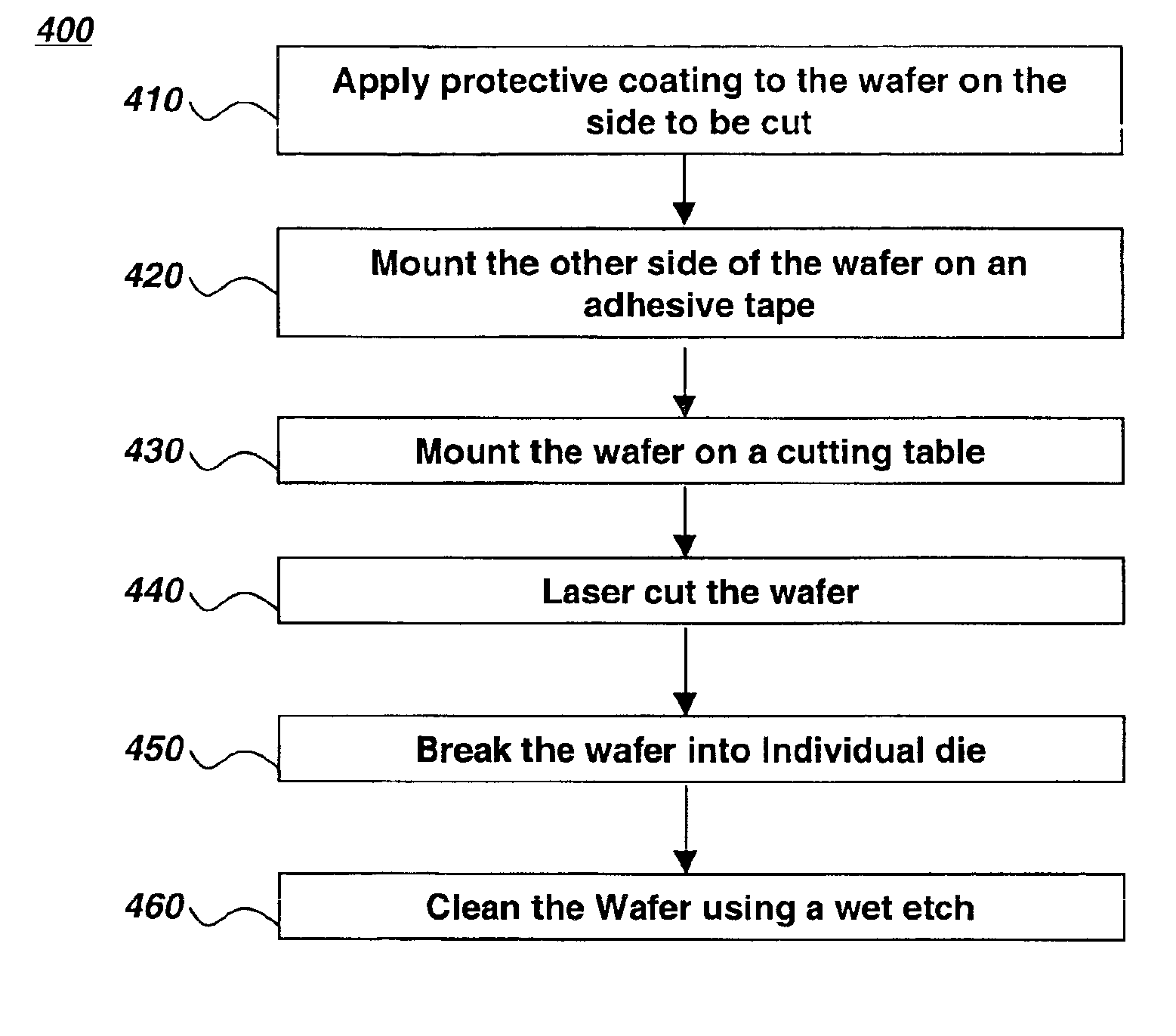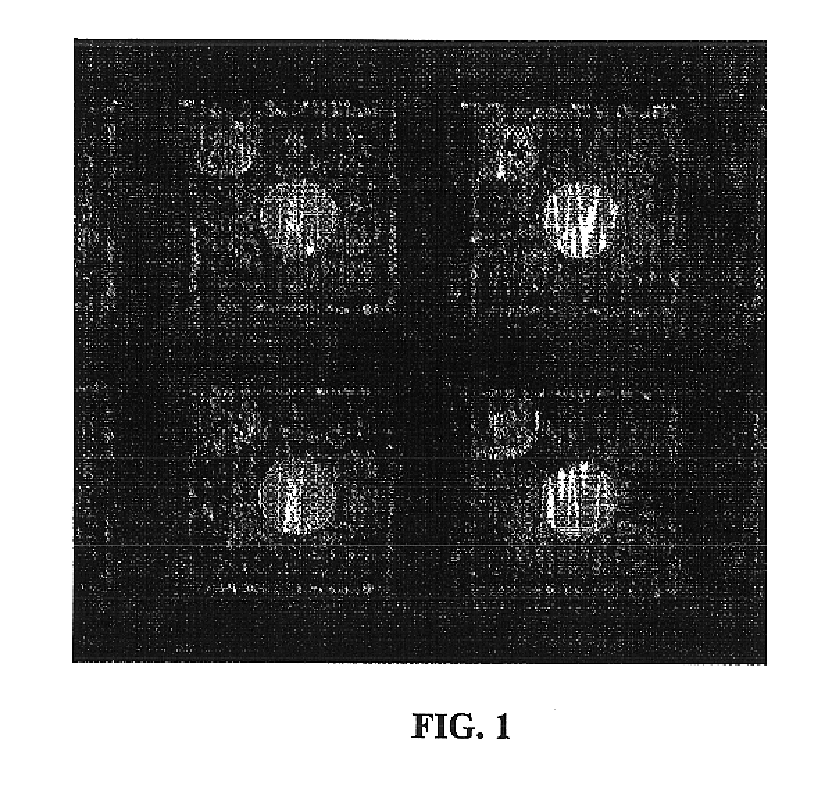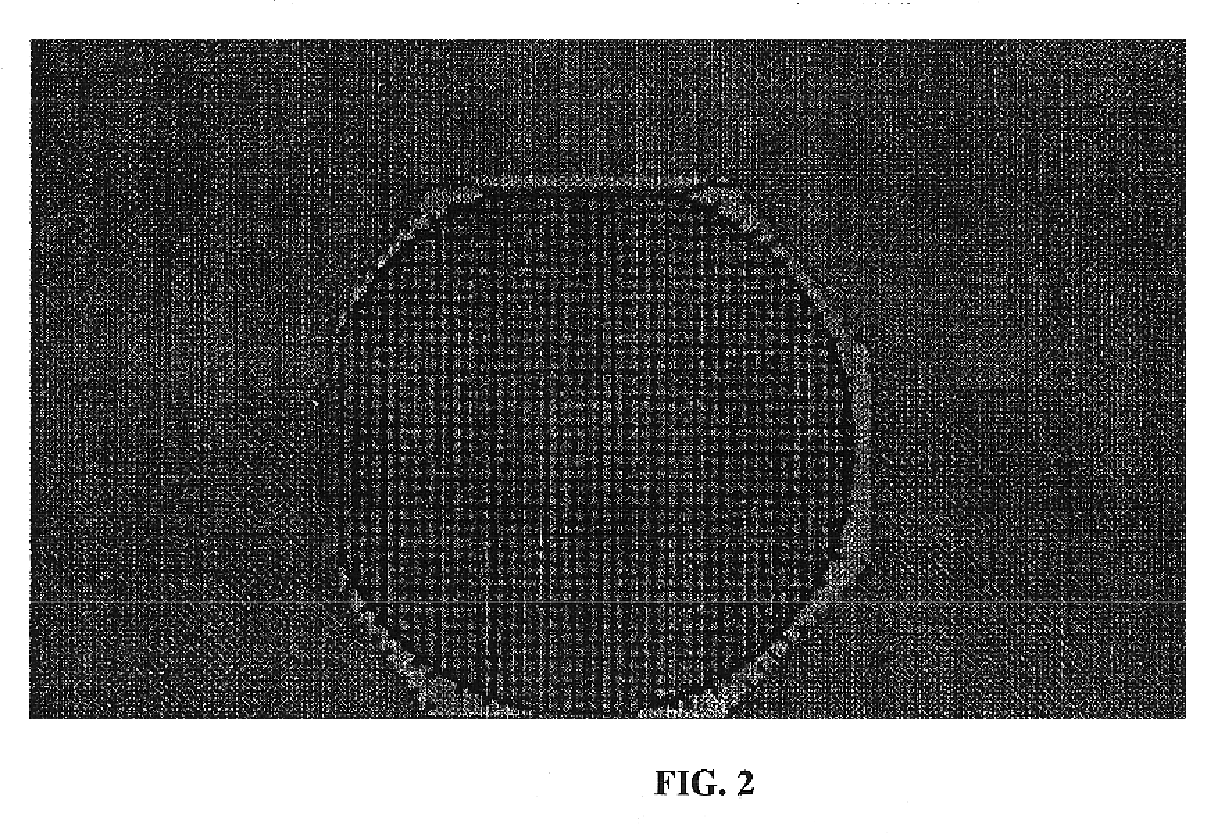Semiconductor wafer protection and cleaning for device separation using laser ablation
a technology of laser ablation and semiconductors, applied in the field of semiconductor device separation, can solve the problems of reducing the reliability of the device, affecting the efficiency of the device, and accumulating waste materials on the wafer, so as to reduce the processing steps and reduce the processing. the effect of waste, reducing the amount of waste, and improving the process efficiency
- Summary
- Abstract
- Description
- Claims
- Application Information
AI Technical Summary
Benefits of technology
Problems solved by technology
Method used
Image
Examples
Embodiment Construction
With reference to the figures for purposes of illustration, the present invention relates generally to an efficient process for die separation. Because of the large amount of energy needed to remove sapphire from a cut area using laser ablation, the waste sapphire tends to form a residue that cannot be removed easily. This waste, or slag, as it is commonly referred to, has two effects on subsequent die yield from the separation process. First, the top surface of the die has been found to have a large buildup of material around the perimeter of the die that degrades reliability and prevents wire bonding of the die. If the die size is generally less than 0.5 mm square, the entire surface can be covered by slag as illustrated by FIG. 1. Secondly, sidewalls of the die which are exposed during ablation have a slag buildup that increases from the bottom to the top of the cut. This excess material decreases the output power of the die since it is absorbing. Given that the comparable hardne...
PUM
 Login to View More
Login to View More Abstract
Description
Claims
Application Information
 Login to View More
Login to View More - R&D
- Intellectual Property
- Life Sciences
- Materials
- Tech Scout
- Unparalleled Data Quality
- Higher Quality Content
- 60% Fewer Hallucinations
Browse by: Latest US Patents, China's latest patents, Technical Efficacy Thesaurus, Application Domain, Technology Topic, Popular Technical Reports.
© 2025 PatSnap. All rights reserved.Legal|Privacy policy|Modern Slavery Act Transparency Statement|Sitemap|About US| Contact US: help@patsnap.com



